 |
RUSSIAN FOOD 101 In 1615, the political situation in the north of Europe was quite tense, as the Swedish king and Muscovite tsar were engaged in a protracted fight over the Baltic territories. Neither was willing to cede, leaving little hope for reconciliation. And yet, Holland decided to act as peacekeeper in this conflict of many years and thus sent envoys to both countries' capitals. It assigned the Chairman of the Supreme Council, along with several officials, one of whom was Antonis Guteeris, an itinerant treasurer, to Russia. Having no diplomatic mission, Guteeris therefore had plenty of time on his hands, and kept a travel journal, from which but one line is worth mentioning in this article devoted to Russian food. According to him, it was "eine seltsame cokerage" – a rather bizarre cuisine.
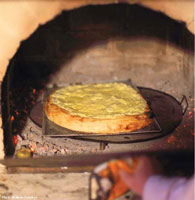 There is another account, one of the earliest at that, dating back to the 10th century. It is more or less in the same vein. It belongs to Ibn-Ruste, an Arabian historian, astronomer and geographer, who was convinced that Eastern Slavs fed on nothing else but mare's milk.
Such attestations of the everyday meals of Russians have not sunk into oblivion. I have happened to read that the Russian cold soup okroshka is made of a beer-and-vodka mix, while borsch is traditionally served tainted and rotten. To think that all this is written not in mediaeval scripts, but in modern glossy magazines and English language culinary websites! It seems to be high time the world was told the truth about Russian cuisine.
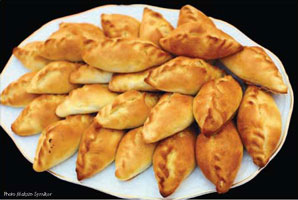 One of the historical differences in the development of the Russian ethnos as compared to other European nations was the possibility to use the resources of a vast territory. Our soil is not as fertile as in other lands and the harsh climate prevents us from using it for the most of the year, but Russia has never been short of forests. Deciduous trees in its temperate zones and coniferous taiga in its northern parts provided people with a sufficient supply of fuel, which led to the creation of a unique national contraption for everyday use: the Russian stove. From a modern point of view, it has a very low efficiency factor – only 30 per cent. Its cavity allows an adult person to climb inside and do ablutions in its warmth. The Russian stove is thus a pretty large hearth, so for the heat to reach the proper temperature for bread-baking, about 10 logs are needed – the equivalent of one small tree. On the other hand, when the Russian stove is well heated, several dishes may be made in it at one go, especially those requiring slow stewing, as well as bread and pies, which may be baked in a sufficient amount for an entire large family. The main feature of the Russian stove is its ability to cool down at a very slow pace, taking up to 12 hours after heating. This peculiarity of the Russian hearth has played a leading role in the shaping of the national cuisine of our people.
So, Russian food comprises, first of all, dishes stewed for hours at between 20°C and 80°C. There are multiple kinds of shchi soup and porridges, which remain the favourites with a great deal of my countrymen, even today. The famous Russian saying: "The shchi and porridge are the food of ours" is not accidental, as the traditional meal of a peasant family was a pot of shchi that had sat in the slowly-cooling stove for hours, and a pot of crumbly, friable cereal porridge made of buckwheat, rye or millet.
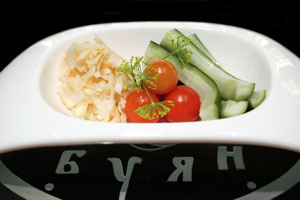 Shchi is usually made of cabbage – raw or sour (sauerkraut) – boiled with meat, mushrooms or fish stock. In some northern provinces, turnip is still preserved through a fermentation process to obtain the main ingredient for turnip shchi. The pickling of vegetables and mushrooms by natural lactic acid fermentation is part and parcel of Russian cuisine, and the pickle solution (brine) played a similar role to that of soy sauce in Southeast Asia at some stage in our history.
Some other Russian soups are cooked from pickled vegetables, such as solyanka (thick, sour and spicy) and rassolnik (with pickled cucumbers and pearl barley as the main ingredients). Adam Olearius, a German scholar who travelled to the Muscovite kingdom in the middle of the 17th century, made a note of a dish called pokhmelka, fried lamb meat served in pickled brine. The word derives from the noun pokhmelye, meaning "hangover". Olearius also mentioned the rich assortment of vegetables consumed by the Muscovites at the time.
in autumn, the so-called cabbage days (kapustnitsy) were observed. They signified the wrapping up of the agricultural year. During this time, the whole family would be engaged in chopping cabbage, which would later be mixed with salt and fermented in wooden barrels to be preserved for the winter. Also, in the traditional peasant calendar, 14 April was called "Maria-the-empty-shchi", named after the remembrance day of St. Maria of Egypt, by which time the stock of preserved sour cabbage consumed during the winter would have been up. However, other kinds of shchi were cooked when there was no more cabbage left: from April to mid-summer, it was substituted by young wild grass, such as nettles, sorrel and glague.
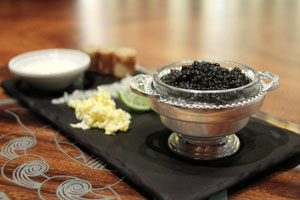
During the main Orthodox Church festivities – Easter and Christmas – cattle were slaughtered. Meat was preserved by two methods: either salted in barrels and cured or smoked. Ducks and geese would have also been salted, and in huge amounts at that, with their carcasses chopped in half before salt was added. As for fish of the best possible species, which was always abundant in Russia, it was and still is preserved in a number of ways. Domostroy, a 16th-to-17th-century literary compilation of household instructions pertaining to various religious, social, and domestic matters of Russian society, listed more than 10 ways of salting fish.
And, of course, there is the famous Russian caviar. Caviar, which we have, by now, almost lost. Today's reader may very well be shocked to find out that 400 years ago, in some parts of Russia beyond the Ural Mountains, osetra (sturgeon) caviar used to be dried and added to baking flour as its cheapest substitute during the years of food shortages and poor harvests!
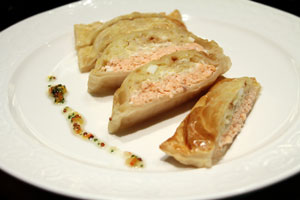 Special pies with fish stuffing are baked only in Russia: kulebyaka, rybnik and rasstegai. However, "a pie can be filled with everything", Russians say. The variety of fillings, dough and pastries are mind-boggling, equal to only the assortment of pies themselves, which may be closed, open, folded in half, bland and sour, sweet and pickly.
Pies and cakes are the signature of Russian national cuisine. Think of the famous blinis, stacked up and smeared in butter, and served with sour cream, caviar or honey. Shrovetide festivities, a Russian type of carnival right before Great Lent, would not be the same without blinis.
Some dishes are cooked only once a year in honour of a solemn event, such as kulich (an Easter cake) or paskha (an Easter dessert of cottage cheese mixed with sugar, butter and raisins); buns in the form of larks made from short pastry to celebrate the advent of spring; small ladders baked from rye flour to commemorate St. John Climacus, also known as John of the Ladder; and kozuli (little gingerbreads baked in the north of Russia for Christmas).
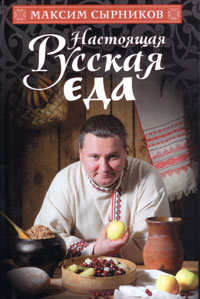
Also worth mentioning are okroshka and botvinya, so loved by Russians. These are cold soups in which the Russian thirst quencher, kvas, made from malt or flour, is used, instead of stock.
From my own experience, okroshka is the only dish whose appearance fills foreigners visiting Russia with apprehension. It is indeed an acquired taste, I would never deny that. We usually get used to it during childhood, having tasted in for the first time at our granny's place who prepared it from homemade kvas.
Which leads me to wonder: what if Guteeris, back in the 17th century, had been given okroshka to taste? It may explain his opinion, then.
By Maksim Syrnikov
|
|
 +65 6696 7068
+65 6696 7068
 info@meridian103.com
info@meridian103.com
 PDA
PDA
 +65 6696 7068
+65 6696 7068
 info@meridian103.com
info@meridian103.com
 PDA
PDA

friend of russia, 2012-12-07